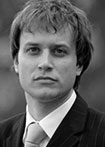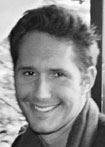Business Cycles Models
Aims of the course
Learn basic stylized facts about business cycles.Learn basic theoretical models of business cycles.
Learn calibration methods for estimation of model parameters.
Learn Matlab and Dynare package as a tool for analysis of business cycle models.
Course syllabus
1. Business Cycle Facts1.1. Definitions and measurement of business cycles
1.2. Decomposition of change in economic activity
1.3. Basic facts on business cycles
2. Theory of Real Business Cycles 2.1. Comparison of different types of models 2.2. Ramsey model 2.3. Basic real business cycle model with technological shocks 2.4. Solving real business cycles model
2.5. Simulation of real business cycles model
2.6. Open issues - puzzles
3. Extensions of basic real business cycles model 3.1. Capacity utilization 3.2. Labor adjustment cost 3.3. Home production
3.4. Preference shocks
4. Asset prices and business cycles 4.1. Asset pricing and Euler equation 4.2. The Lucas model 4.3. Equity premium puzzle
5. Monetary business cycles
5.1. Empirical evidence on relations between money and business cycles
5.2. Identification of monetary policy shocks
5.3. Monopolistic competition model
5.4. Price rigidities and Calvo pricing
5.5. New Keynesian Phillips curv
6. Fiscal and external shocksi
6.1. Evidence on relationships between fiscal policy and external shocks with business cycles
6.2. Identification of shocks
6.3. Model extensions
6.4. Simulation of models
6.5. Open questions
Course director(s)

|
|
|
|
|
|
|
||

|
|
|
|
|
|
|
||






